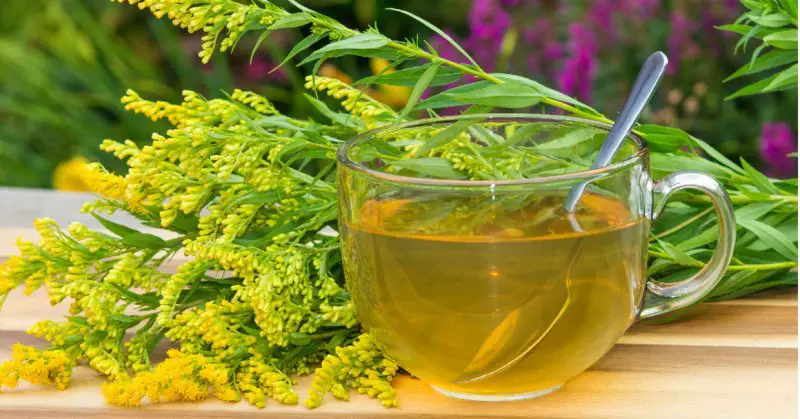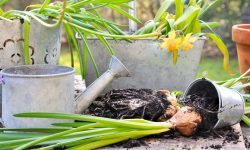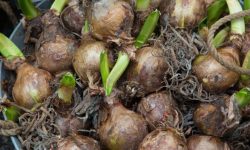Goldenrod is often admired for its golden plumes that brighten fields and gardens in late summer and fall. Yet this hardy perennial is more than just a visual delight. For centuries, people have valued goldenrod for its medicinal uses, ecological importance, and versatile applications in daily life.
Many gardeners and herbalists recognize goldenrod as a plant that bridges beauty with function. It supports pollinators, enriches landscapes, and provides natural remedies. With the right knowledge, you can appreciate goldenrod as more than a wildflower and learn how it benefits both humans and the environment.
The Historical Role of Goldenrod

Goldenrod has long held a place of importance in traditional medicine and folklore. Indigenous peoples in North America were among the first to recognize its healing power, using it to treat wounds, fevers, and digestive complaints. They brewed teas, made poultices, and valued the plant for its ability to bring comfort during illness. These early uses established goldenrod as a plant not only admired for its beauty but also respected for its practicality.
As settlers arrived from Europe, goldenrod quickly gained recognition overseas. In the 16th and 17th centuries, the plant was exported and introduced into European herbal medicine. Known as “solidago,” meaning “to make whole,” goldenrod was often prescribed for kidney problems, urinary infections, and oral health. It became a symbol of natural healing in an era when plants were the foundation of medicine. Its popularity continued through the Middle Ages, securing its reputation as both a medicinal herb and a symbol of strength.
Goldenrod also played a cultural role in American history. Following the Boston Tea Party, colonists turned to goldenrod tea as a patriotic alternative to imported black tea, calling it “Liberty Tea.” This association gave the plant a symbolic identity as well as a practical one. Over the centuries, goldenrod has remained part of traditional remedies and ecological practices. Today, its history connects us to both cultural traditions and the enduring reliance on plants for well-being. By looking back, we can better appreciate goldenrod’s continued relevance in gardens, herbal medicine, and conservation.
Medicinal Benefits of Goldenrod
Anti-Inflammatory Properties
Goldenrod has earned recognition for its role in easing inflammation throughout the body. Traditional healers relied on teas, compresses, and tinctures prepared from its leaves and flowers to soothe swollen joints, aching muscles, and skin irritations. These remedies provided natural relief at a time when few conventional treatments were available. Over generations, goldenrod became a staple in many households, valued as a dependable option for calming everyday aches and promoting recovery.
Scientific studies now provide evidence that supports these traditional applications. Goldenrod contains flavonoids, saponins, and phenolic compounds, all of which possess anti-inflammatory and antioxidant activity. These compounds help reduce swelling, improve circulation, and may protect tissues from further damage. For people struggling with arthritis or inflammatory conditions, goldenrod can complement wellness routines when used appropriately. While it should never replace medical advice, it continues to offer gentle support, bridging ancient practices with modern understanding.
Supporting Urinary Tract Health
Goldenrod has long been valued for maintaining urinary tract health. Herbalists recommend it for its diuretic properties, which increase urine flow and help flush bacteria from the bladder and kidneys. Drinking goldenrod tea or using extracts can reduce discomfort, support kidney function, and decrease the likelihood of infections. Its soothing effect on irritated tissues has made it a trusted remedy in traditional medicine.
For those prone to urinary tract infections or recovering from kidney issues, goldenrod provides a natural means of support. Its cleansing action promotes balance while offering mild relief without harsh side effects. Many people use it as part of a preventative routine, especially when combined with proper hydration and healthy lifestyle practices. However, responsible use is essential, as overconsumption may strain the kidneys. Consulting a qualified practitioner ensures safe integration into wellness plans.
Respiratory Relief
Goldenrod also offers benefits for respiratory health, making it a versatile herb beyond urinary and inflammatory support. Traditional healers brewed teas and infusions to ease congestion, calm coughs, and reduce symptoms of seasonal allergies. Its natural expectorant qualities help clear mucus while soothing irritated airways, providing comfort during seasonal transitions when respiratory problems often arise.
Today, goldenrod continues to be used in herbal medicine as a gentle aid for lung health. Practitioners recommend it for mild respiratory concerns, such as sinus pressure, allergy discomfort, or post-cold recovery. The plant’s bioactive compounds assist the body in reducing inflammation within the airways, allowing for easier breathing. While it should not replace medical care for chronic or severe conditions, goldenrod remains a helpful natural option for supporting respiratory comfort. Its role highlights the versatility of this golden-flowered herb in addressing multiple aspects of human health.
Nutritional and Antioxidant Value
Goldenrod is more than a striking wildflower; it also carries important nutritional benefits. Traditionally, different parts of the plant, including its leaves and flowers, were consumed in teas or infusions to provide a gentle boost of wellness. These plant components contain natural compounds such as flavonoids, saponins, and tannins, which are known to support overall health. While goldenrod is not commonly used as a primary food source, its herbal preparations contribute trace nutrients and valuable plant-based compounds that enhance well-being.
One of the most significant aspects of goldenrod is its antioxidant profile. Antioxidants play a vital role in protecting the body from oxidative stress, which is linked to premature aging and chronic conditions. The flavonoids and phenolic acids found in goldenrod act as natural protectors, neutralizing harmful free radicals. These compounds are often associated with better immune function, improved circulation, and reduced risk of inflammation-related illnesses. Consuming goldenrod tea regularly has been valued in traditional medicine for this very reason.
In addition to its antioxidant content, goldenrod supports hydration and detoxification. Many herbalists recommend it for its mild diuretic properties, which help flush excess fluids and waste products from the body. When combined with its antioxidant potential, this makes goldenrod a supportive herb for kidney and urinary tract health. Its role in traditional wellness practices highlights its value as both a nutritional and therapeutic plant. While modern research continues to explore its full potential, goldenrod already stands out as a natural source of compounds that promote vitality and balance.
Goldenrod in the Garden
Soil Improvement
Goldenrod does more than brighten the garden with its golden blooms; it also contributes to long-term soil improvement. Its deep, sturdy roots help loosen compacted ground, allowing water and air to move more freely. This improved soil structure not only benefits goldenrod itself but also enhances the growing conditions for surrounding plants. The presence of goldenrod roots encourages healthy microbial activity underground, which plays a crucial role in nutrient cycling and overall soil vitality. Additionally, goldenrod helps stabilize soil, reducing erosion and maintaining moisture during dry spells.
When the plant naturally decomposes at the end of its life cycle, it enriches the soil with organic matter. This organic layer improves fertility, ensuring that future plantings thrive without relying heavily on chemical fertilizers. Gardeners often notice that plots with goldenrod support healthier, more balanced ecosystems. By integrating goldenrod into a landscape, one can enjoy both vibrant beauty and a practical method for keeping soil productive and sustainable over time. Goldenrod truly acts as a natural partner for soil enrichment.
Attracting Pollinators
Goldenrod is widely celebrated for its unmatched ability to attract pollinators such as bees, butterflies, and beneficial insects. Blooming in late summer and autumn, it provides an abundant nectar and pollen source when many other flowers have already faded. This seasonal timing makes goldenrod a crucial lifeline for pollinators that rely on late-blooming plants to build energy reserves for winter. Its bright yellow clusters act as natural beacons, drawing in pollinators from far and wide.
By planting goldenrod, gardeners are not only adding vibrant color but also actively supporting biodiversity. The presence of pollinators in the garden enhances the health of the entire ecosystem by improving fruit set and vegetable yields. A garden alive with buzzing bees and fluttering butterflies is not just visually stunning but also more productive and balanced. For anyone seeking to support the environment while beautifying their outdoor space, goldenrod stands out as an essential choice that connects aesthetics with ecological importance.
Low Maintenance Beauty
Goldenrod is a plant that combines resilience with elegance, making it ideal for gardeners of all experience levels. It thrives in a variety of soil types, including those that are poor or sandy, and once established, it withstands drought conditions with ease. Unlike many ornamental plants, goldenrod is naturally resistant to most pests and diseases, which means it requires little intervention to stay healthy. This makes it a convenient option for those who want lasting garden color without heavy upkeep.
Beyond its toughness, goldenrod delivers striking beauty with its tall stems and bright yellow flowers that return reliably year after year. It spreads naturally, creating bold displays that enhance meadows, borders, or wildflower gardens with minimal effort. Gardeners appreciate how it combines practicality and aesthetic appeal, offering vibrant blooms that require little more than occasional management. For those who want both sustainability and effortless beauty, goldenrod proves to be a rewarding and dependable addition to any landscape.
Environmental Importance
Supporting Biodiversity
Goldenrod is one of the most important wildflowers for sustaining biodiversity in both natural and cultivated landscapes. Its long blooming period ensures that bees, butterflies, and beetles have access to nectar and pollen when few other plants are in flower. The seeds of goldenrod also serve as food for finches, sparrows, and other small birds during late fall and winter. By supporting such a wide range of species, goldenrod strengthens the ecological web and keeps natural cycles intact.
The absence of goldenrod would create a noticeable gap in seasonal food supply for wildlife. Many insects depend on it for survival during critical times, which in turn supports birds and small mammals higher up the chain. By planting goldenrod, gardeners and conservationists help preserve habitats where multiple species can thrive together. This role as a “keystone” plant makes goldenrod not only visually striking but also ecologically indispensable for maintaining local biodiversity year after year.
Preventing Soil Erosion
Goldenrod’s root system is designed for strength and resilience, making it an excellent ally against soil erosion. Its roots grow deep and wide, anchoring soil particles in place and minimizing displacement caused by rain or wind. On hillsides, riverbanks, and open fields, goldenrod acts as a natural stabilizer that slows down water runoff and protects the land from degradation. These qualities make it highly valuable for restoring disturbed areas where soil loss is a major concern.
Communities often include goldenrod in conservation projects and naturalized plantings because of its effectiveness in reclaiming weakened land. Its adaptability to different soil types allows it to flourish where other plants fail, providing long-term coverage that strengthens the ground. While it helps protect against erosion, goldenrod also supports wildlife at the same time, creating a multifunctional landscape solution. Its dual role in conservation and biodiversity makes it a trusted choice for sustainable land management practices.
Natural Pest Resistance
Goldenrod offers a natural solution to pest management by attracting beneficial insects that act as biological controls. Its blooms lure ladybugs, lacewings, hoverflies, and predatory wasps, all of which feed on harmful pests such as aphids, mites, and caterpillars. This natural defense system helps keep pest populations in balance without the need for chemical intervention. As a result, goldenrod contributes to healthier gardens and agricultural systems that rely less on synthetic pesticides.
By reducing dependence on chemical sprays, goldenrod encourages a safer environment for pollinators, pets, and humans. Its ability to foster natural pest resistance makes it a favorite among organic gardeners and ecological landscapers. Beyond its practical benefits, goldenrod enhances the beauty of a space while simultaneously strengthening its resilience. Planting goldenrod is therefore not just a decorative choice but also a proactive step toward creating landscapes that are sustainable, environmentally friendly, and self-regulating through balanced ecosystems.
Everyday Uses of Goldenrod
Herbal Teas and Infusions
Goldenrod tea remains one of the most traditional and accessible ways to enjoy the plant’s benefits. Known for its mild floral taste, goldenrod pairs well with herbs such as mint, chamomile, or lemon balm, creating blends that are both refreshing and soothing. Many people drink goldenrod tea to support urinary health, ease mild inflammation, or simply relax after a long day. Its gentle properties make it a favorite in herbal medicine, offering wellness support without overwhelming the body.
Brewing goldenrod tea is simple, requiring only dried leaves or flowers steeped in hot water. It can be served warm for comfort in cooler seasons or chilled for a refreshing summer drink. Unlike caffeinated teas, goldenrod offers relaxation without restlessness, making it an ideal evening beverage. This versatility has helped it remain popular in modern wellness routines, bridging the gap between traditional herbal remedies and contemporary lifestyle choices.
Natural Dyes
Goldenrod has a long history as a source of natural dye, valued for the rich golden-yellow shades produced by its flowers. For centuries, communities used goldenrod to color wool, cotton, and linen, creating fabrics that carried both beauty and cultural meaning. The dye binds well to natural fibers, ensuring vibrant tones that last through wear and washing. This natural approach to fabric coloring made goldenrod a staple resource in many rural households.
Today, artisans and eco-conscious crafters still turn to goldenrod for sustainable dyeing. Its pigments allow for a range of yellow hues, and when combined with natural mordants or other plant-based dyes, it produces subtle variations from bright sunshine yellow to warm earthy tones. This eco-friendly option appeals to those seeking alternatives to synthetic dyes, which often harm the environment. In this way, goldenrod continues to connect modern artistry with traditional practices, proving its enduring value beyond the garden.
Decorative Arrangements
Goldenrod’s striking appearance makes it a natural choice for floral decoration. Its tall stems topped with clusters of golden blossoms bring brightness and texture to fresh bouquets. Florists often pair goldenrod with roses, sunflowers, or asters to create balanced arrangements that celebrate the late summer and autumn seasons. Even when dried, goldenrod retains much of its vibrant color, making it a versatile option for long-lasting displays.
Because of its adaptability, goldenrod is suitable for a variety of decorative purposes. It adds rustic charm to wildflower bouquets, elegance to wedding arrangements, and warmth to seasonal home décor. Beyond its visual beauty, goldenrod carries symbolic meanings of resilience, energy, and optimism, making it a thoughtful addition to meaningful arrangements. Whether used fresh or preserved, it provides both aesthetic value and emotional significance, ensuring that this humble wildflower continues to inspire and delight in decorative arts.
Goldenrod in Modern Wellness
Herbal Supplements
Goldenrod today is widely available as herbal supplements in the form of capsules, tinctures, or extracts. These concentrated products are designed to deliver consistent dosages of the plant’s active compounds, such as flavonoids and saponins. People often turn to supplements for convenience, especially if they do not have access to fresh or dried goldenrod. They are commonly used to support urinary tract health, reduce mild inflammation, and encourage overall vitality.
Manufacturers highlight goldenrod’s long history of traditional use while integrating modern scientific findings into product development. By standardizing extracts, supplement companies ensure more reliable effects compared to homemade remedies. However, experts recommend consulting healthcare professionals before starting goldenrod supplements, especially for individuals with medical conditions or those taking other medications. This balance between tradition and science reflects how goldenrod has transitioned into mainstream wellness practices.
Skincare and Topical Applications
Goldenrod is also gaining attention in skincare, thanks to its soothing and anti-inflammatory properties. Extracts from the plant are added to creams, balms, and ointments to help calm irritated skin, reduce redness, and promote healing of minor wounds. Its antioxidant compounds support skin health by protecting against oxidative stress, which contributes to premature aging. This makes goldenrod an attractive ingredient for natural skincare formulations.
Beyond commercial products, some herbalists prepare simple infusions or salves using goldenrod flowers. These preparations are applied to sore muscles, insect bites, or minor rashes, offering natural comfort without synthetic chemicals. The plant’s versatility allows it to serve both medicinal and cosmetic purposes, reflecting its growing role in holistic self-care. As consumers increasingly seek plant-based alternatives, goldenrod stands out as a gentle yet effective option for daily skincare.
Aromatherapy and Relaxation
Goldenrod essential oil, though less common than other plant oils, is valued in aromatherapy for its calming effects. The oil carries a sweet, herbaceous scent that promotes relaxation and stress relief when diffused or diluted in massage blends. Practitioners often recommend goldenrod oil to ease tension, support restful sleep, or enhance meditation practices. Its unique fragrance connects users to nature while providing emotional balance.
While research on goldenrod essential oil is still limited, anecdotal reports highlight its potential in stress management. Used responsibly, it complements other relaxation techniques such as yoga, deep breathing, or evening herbal teas. Its role in aromatherapy demonstrates how goldenrod extends beyond physical wellness into emotional and spiritual care. For individuals seeking natural ways to unwind, goldenrod offers a subtle yet effective addition to relaxation routines.
Precautions and Considerations
Allergies and Sensitivities
Although goldenrod is widely regarded as safe, certain individuals may experience allergic reactions, particularly those sensitive to ragweed, daisies, or related plants. Reactions can range from mild skin irritation, rashes, or itching to sneezing, watery eyes, or mild respiratory discomfort. These symptoms usually occur when consuming teas, tinctures, or using topical preparations made from the plant. Testing a small amount first allows users to assess their tolerance and prevent more severe allergic responses.
For topical use, conducting a patch test is highly recommended before applying goldenrod-infused creams, salves, or ointments over larger skin areas. Pregnant or breastfeeding women should exercise extra caution and seek professional medical guidance before consuming goldenrod supplements or using concentrated extracts. Additionally, individuals with pre-existing respiratory conditions should monitor for symptoms when inhaling dried flowers or essential oils. By taking these precautions and observing personal sensitivities, users can safely incorporate goldenrod into their wellness routines. Awareness and mindfulness around potential allergies ensure the plant provides its therapeutic, nutritional, and decorative benefits without adverse effects, making it a safe and valuable addition to herbal practices.
Interactions with Medications
Goldenrod’s mild diuretic properties can influence how the body processes certain medications, particularly those prescribed for high blood pressure, kidney conditions, or fluid retention. By increasing urine production, goldenrod may alter the levels of these drugs in the bloodstream, potentially affecting their effectiveness. Individuals on medications should therefore exercise caution and consult a healthcare professional before incorporating goldenrod supplements or teas into their routine.
Even though goldenrod is a natural remedy, it can still interact with prescription or over-the-counter treatments. Careful monitoring of dosage, timing, and possible side effects is essential to avoid complications. Healthcare providers can advise on safe usage and help determine whether goldenrod can be safely included alongside conventional treatments. Understanding these interactions ensures that the plant’s benefits—such as anti-inflammatory effects, urinary support, and antioxidant properties—are gained without compromising medical care. With proper guidance, goldenrod can complement wellness routines safely and effectively.
Proper Usage and Dosage
Using goldenrod safely requires careful attention to both preparation and quantity. Consuming excessive amounts, particularly of concentrated extracts, tinctures, or strong teas, may result in digestive upset, mild nausea, or other minor side effects. Following recommended doses helps ensure that the plant provides health benefits without causing discomfort. It is also important to respect the potency differences between fresh, dried, or powdered goldenrod, as each form releases active compounds at varying levels.
Starting with a smaller dose allows the body to adjust and helps users monitor tolerance before gradually increasing intake. Herbalists often suggest brewing tea for a shorter time or diluting tinctures for first-time users. Additionally, goldenrod should be consumed in moderation, even when used as a culinary herb or ingredient in infusions. By adhering to proper preparation techniques and dosage guidelines, individuals can safely enjoy goldenrod’s benefits. Responsible use not only enhances wellness effects but also reduces the risk of adverse reactions, making goldenrod a versatile and reliable addition to herbal routines and natural remedies.






